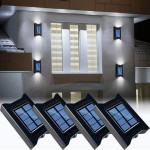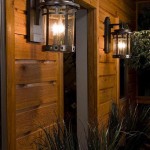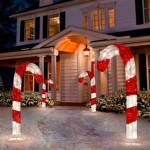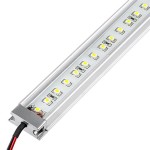Outdoor Lighting Requirements for Residential Properties
Outdoor lighting for residential properties is governed by a complex interplay of factors, encompassing aesthetic considerations, homeowner preferences, safety concerns, security measures, and increasingly, energy efficiency and environmental impact. Understanding the requirements and best practices for outdoor lighting is crucial for creating a functional, visually appealing, and compliant landscape.
The term "requirements" in this context refers not only to legally mandated standards but also to the broader set of guidelines and considerations that influence effective and responsible outdoor lighting design. These requirements can be categorized into several key areas, including photometric performance, light trespass, energy conservation, local ordinances, and aesthetic integration with the surrounding environment.
Effective outdoor lighting enhances the usability of outdoor spaces, extends the enjoyment of properties into the evening hours, and provides a measure of security against potential criminal activity. However, poorly designed or improperly installed lighting can be intrusive, wasteful, and detrimental to the environment. Therefore, a comprehensive understanding of relevant requirements is paramount for achieving optimal results.
Photometric Performance and Light Distribution
Photometrics, the science of measuring light, plays a central role in determining the effectiveness of outdoor lighting installations. Key photometric parameters include illuminance (the amount of light falling on a surface, measured in lux or foot-candles), luminance (the brightness of a surface, measured in candelas per square meter or foot-lamberts), and light distribution (the pattern of light emitted by a luminaire). Meeting photometric requirements ensures that adequate illumination is provided for specific tasks and activities, such as walking, socializing, or deterring unauthorized entry.
For residential properties, the Illuminating Engineering Society (IES) provides recommended illuminance levels for various outdoor areas. These recommendations serve as a starting point for determining the appropriate lighting levels for pathways, driveways, patios, and other areas. For instance, pathways typically require lower illuminance levels than driveways, where vehicle maneuvering necessitates greater visibility. Selecting luminaires with appropriate light distributions is equally critical. Luminaires should direct light downwards, minimizing glare and light trespass onto neighboring properties.
The use of cut-off luminaires, designed to prevent light from being emitted above a certain angle, is strongly encouraged to reduce light pollution and improve energy efficiency. Full cut-off luminaires, which emit no light above 90 degrees, are particularly effective at controlling light trespass and minimizing sky glow. The specification of luminaires with appropriate color rendering index (CRI) ratings is also important for ensuring accurate color perception. Higher CRI values indicate a greater ability to accurately render the colors of objects and surfaces, enhancing visual comfort and safety.
It is important to note that photometric calculations are often necessary to verify that a proposed lighting design meets the specified requirements. These calculations take into account the type and location of luminaires, the reflectance of surfaces, and the presence of obstructions. Software tools and professional lighting designers can assist in performing these calculations and optimizing lighting designs for efficiency and performance.
Inadequate lighting can lead to accidents and injuries, while excessive or poorly directed lighting can be annoying and disruptive to neighbors. By carefully considering photometric performance and light distribution, homeowners can create outdoor lighting systems that are both safe and aesthetically pleasing.
Light Trespass and Environmental Considerations
Light trespass, also known as light pollution, refers to unwanted light that spills onto neighboring properties or into the night sky. Excessive light trespass can disrupt sleep patterns, interfere with astronomical observations, and negatively impact wildlife. Minimizing light trespass is an increasingly important consideration in outdoor lighting design.
Many municipalities have implemented ordinances to regulate light trespass, specifying maximum allowable light levels at property lines. These ordinances often include provisions for shielding luminaires, limiting the hours of operation of outdoor lighting, and restricting the use of certain types of lighting. Homeowners should familiarize themselves with local ordinances before installing outdoor lighting to ensure compliance.
In addition to legal requirements, there are several best practices that can be followed to minimize light trespass. These include: using luminaires with appropriate shielding and aiming the light downwards, avoiding over-lighting, and using timers or motion sensors to turn off lights when they are not needed. Furthermore, selecting appropriate color temperatures for outdoor lighting can also help to reduce light trespass. Warmer color temperatures (e.g., 2700K to 3000K) are generally less disruptive to wildlife and neighbors than cooler color temperatures (e.g., 4000K to 5000K).
Environmental considerations extend beyond light trespass to encompass energy consumption and the impact on wildlife. Traditional incandescent and halogen lamps are notoriously inefficient, consuming large amounts of energy and producing significant amounts of heat. Switching to LED lighting can significantly reduce energy consumption and lower electricity bills. LED luminaires are also more durable and have a longer lifespan than traditional lamps, reducing the need for frequent replacements.
Outdoor lighting can also have a detrimental impact on wildlife, particularly nocturnal animals that rely on darkness for hunting, navigation, and reproduction. Excessive artificial light can disrupt these natural behaviors, leading to reduced foraging efficiency, increased predation risk, and impaired reproductive success. Minimizing light pollution and using wildlife-friendly lighting practices can help to mitigate these negative impacts. For example, using red or amber-colored lights, which are less disruptive to wildlife than white or blue lights, is a recommended practice in many areas.
By carefully considering light trespass and environmental considerations, homeowners can create outdoor lighting systems that are both functional and environmentally responsible.
Local Ordinances and Regulations
Residential outdoor lighting is frequently subject to local ordinances and regulations designed to manage light pollution, protect neighborhood aesthetics, and promote energy conservation. These ordinances can vary significantly from one municipality to another, covering aspects such as allowable light levels, fixture types, hours of operation, and permitting requirements.
Before undertaking any outdoor lighting project, homeowners must thoroughly research and understand the applicable local ordinances. This information is typically available through the city or county planning department, building department, or online resources. Failing to comply with local regulations can result in fines, project delays, or even the removal of non-compliant lighting fixtures.
Some common elements found in local outdoor lighting ordinances include:
- Setback requirements: Specifying the minimum distance that lighting fixtures must be located from property lines.
- Height restrictions: Limiting the maximum height of lighting poles or fixtures.
- Shielding requirements: Mandating the use of shielded fixtures that direct light downwards and prevent upward light spill.
- Light level limits: Establishing maximum allowable illuminance levels at property lines or within specified zones.
- Time-of-day restrictions: Limiting the hours during which outdoor lighting can be operated, typically with stricter rules during late-night or early-morning hours.
- Fixture type restrictions: Prohibiting or restricting the use of certain types of lighting fixtures, such as unshielded floodlights or high-intensity discharge (HID) lamps.
- Color temperature limits: Restricting the use of excessively blue-rich light sources to reduce sky glow and potential impacts on wildlife.
- Permitting requirements: Requiring homeowners to obtain a permit before installing or modifying outdoor lighting systems.
In addition to complying with specific ordinance requirements, homeowners should also be mindful of the overall impact of their outdoor lighting on the surrounding community. Excessive or poorly designed lighting can create a nuisance for neighbors, detract from the visual appeal of the neighborhood, and contribute to light pollution.
Working with a qualified lighting designer or electrician who is familiar with local ordinances can help homeowners navigate the regulatory landscape and ensure that their outdoor lighting projects are compliant and aesthetically appropriate. Professional assistance can also help to optimize lighting designs for energy efficiency, safety, and security.
Understanding and adhering to local ordinances and regulations is a crucial aspect of responsible outdoor lighting design, promoting harmony within the community and minimizing negative environmental impacts.

10 8 9 Residential Outdoor Lighting Regulations

Outdoor Lighting Guide Delmarfans Com

Design Guide For Your Home S Outdoor Lighting

An Architect S Guide To Outdoor Lighting Architizer Journal

Residential Landscape Outdoor Lighting Faq

14 Tips Planning Outdoor Lighting Even If You Re Not A Pro

Outdoor Lighting Installation In Dc Md Va

Outdoor Lighting Fixtures Guide Houston Lightscapes

Residential Outdoor Lighting Innovative Light Designs

Outdoor Lighting Standards Planning Development







